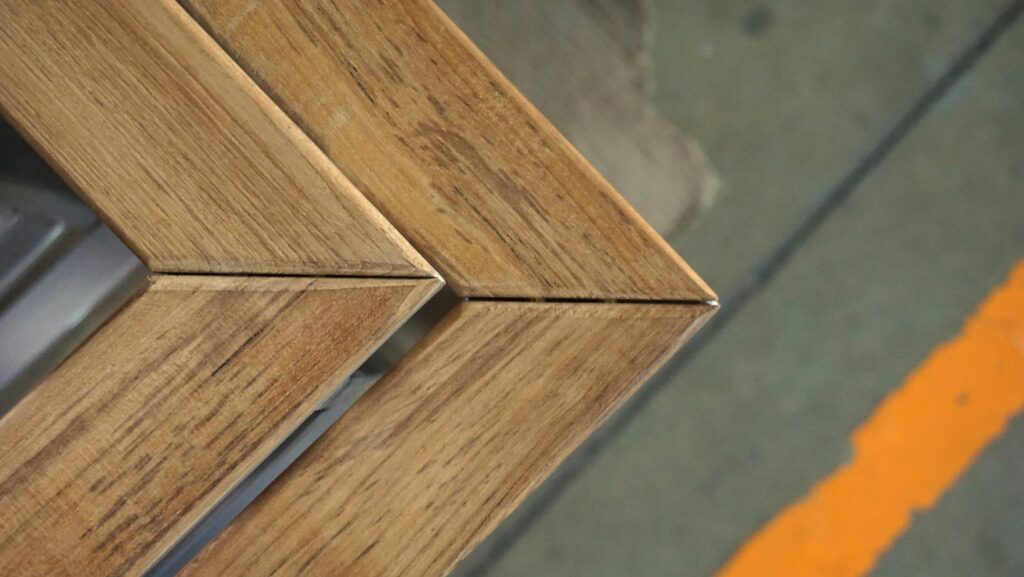The Allure of Wood in Design
Wood, with its natural warmth and versatility, has been a favorite material in design and architecture for centuries. Its ability to transform spaces through various patterns and designs is unparalleled. This guide delves into the world of angled plank designs in wood artistry, showcasing how these patterns can bring elegance and character to any space.
Exploring Angled Plank Patterns
Among the myriad of wood designs, angled plank patterns stand out for their dynamic appearance and ability to create visual interest. A classic example is herringbone parquetry flooring, where rectangular planks are arranged in a broken zigzag pattern. This style not only adds sophistication but also creates a sense of movement and dimensionality in a room.
Herringbone: A Timeless Classic
Herringbone, one of the most popular angled plank designs, has a rich history and continues to be a sought-after pattern for flooring. Its interlocking arrangement, resembling the bones of a fish, offers both aesthetic appeal and practical benefits, such as durability and ease of maintenance.
Chevron: The Bold Alternative
Similar to herringbone, chevron patterns feature planks meeting in perfect points. The chevron pattern, with its ‘V’ shape, creates a more streamlined and uniform look compared to the staggered, more rustic appearance of herringbone. It’s ideal for those seeking a blend of classic and contemporary styles.
Versailles Panel: Royal Elegance
The Versailles panel is a sophisticated wood pattern inspired by the historic Palace of Versailles. It combines diagonal and straight planks, forming a rich tapestry of wood that brings luxurious grandeur to any space. This pattern is a testament to the intricate artistry possible with wood.
Basketweave: Intricacy and Charm
The basketweave pattern, resembling the weave of a basket, is another intricate design that adds texture and depth to floors and walls. This pattern can range from simple to complex, depending on the number of planks used and the intricacy of the weave.
Design Considerations for Angled Plank Woodwork
When incorporating angled plank designs, consider the following:
- Room Size and Scale: Larger patterns work well in spacious rooms, while smaller, simpler designs are better suited to smaller spaces.
- Color and Wood Type: The choice of wood and its finish can drastically affect the overall look. Lighter woods can create a more modern feel, while darker woods tend to offer a more traditional appearance.
- Installation: Angled plank designs require precision in installation. It’s crucial to work with skilled craftsmen to ensure the pattern aligns correctly.
Maintaining and Caring for Angled Plank Designs
Proper maintenance is key to preserving the beauty of wood artistry. Regular cleaning, protection from direct sunlight, and occasional refinishing can keep these designs looking fresh and vibrant for years.
Sustainability in Wood Artistry
As we become more environmentally conscious, the sustainability of the wood used in these designs is important. Opting for responsibly sourced wood and eco-friendly finishes can ensure that your design choices are not only beautiful but also environmentally friendly.
Celebrating the Craft of Wood Design
Angled plank designs in wood artistry are a testament to the timeless beauty and versatility of wood. Whether it’s the classic elegance of herringbone, the boldness of chevron, or the intricate charm of basketweave, these patterns have the power to transform spaces. Embracing these designs in your home or workspace can add a unique character and warmth that only wood can offer.




More Stories
From Boring to Bold: Creative Ways to Upgrade Basic Wooden Doors
What Is a ‘Persian’ Rug?
8 Shower Renovation Ideas You Will Love